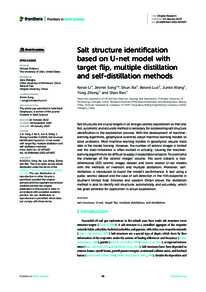Document
Salt structure identification based on U-net model with target flip, multiple distillation and self-distillation methods.
Identifier
DOI: 10.3389/feart.2022.1071637
Source
Frontiers in Earth Science. v. 10, 1071637
Contributors
Song, Jinmin., Author
Xia, Shun., Author
Luo, Beiwei., Author
Wang, Junke., Author
Zhong, Yong., Author
Ren, Shan., Author
Country
United Kingdom.
Publisher
Frontiers Media S. A.
Gregorian
2023-01-04
Language
English
English abstract
Salt structures are crucial targets in oil and gas seismic exploitation so that one fast, automatic and accurate method is necessary for accelerating salt structure identification in the exploitation process. With the development of machine-learning algorithms, geophysical scientists adopt machine-learning models to solve problems. Most machine-learning models in geophysics require mass data in the model training. However, the number of seismic images is limited and the class-imbalance is often existed in actuality, causing the machine-learning algorithms to be difficult to apply in exploitation projects. To overcome the challenge of the seismic images’ volume, this work collects a two-dimensional (2D) seismic images dataset and trains several U-net models with the methods of inversion and multiple distillation. Moreover, self-distillation is introduced to boost the model’s performance. A test using a public seismic dataset and the case of salt detection in the Hith evaporite in southern United Arab Emirates and western Oman shows the distillation method is able to identify salt structures automatically and accurately, which has great potential for application in actual exploitation.
ISSN
2296-6463
Category
Journal articles

